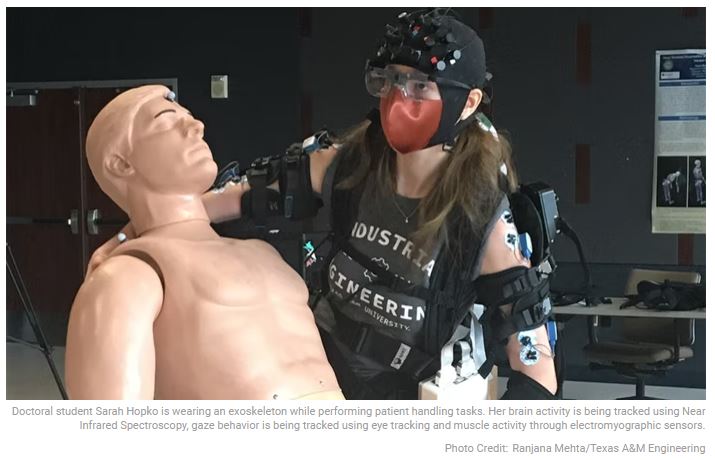“In manufacturing, work-related lower-back injuries from lifting and handling heavy objects account for approximately $100 billion in medical bills annually in the United States, according to data from the Bureau of Labor Statistics.”
To try and combat back issues while also innovating for the future, researchers at Texas A & M University and Ohio State University found that although novel ergonomic interventions like industrial exoskeletons have shown promise, increased cognitive demands in the workplace can offset the mechanical advantages of wearing a low-back exoskeleton.
This was the first research study that investigated the brain while the user was wearing a back exoskeleton and performing a lifting task. The study enabled the researchers to document the neurocognitive effects of wearing the device so that strategies could be created to mitigate the cognitive risk.
The research team recruited healthy adults, both men, and women with no history of lower back injuries. They then had them doing extensive lifting tasks both with and without the low back exoskeleton. The results as was shared previously were that there is little advantage gained in “reducing spinal compression loads and marginal practical benefit in reducing spine shear loads, compared to not wearing an exoskeleton.” The results further showed that it reduced some of the cognitive aspects which regulate alertness and vigilance, necessary in a manufacturing environment.
We can see the time and effort it takes to develop a new technology that may further protect the health and safety of workers. It comes as no surprise that multiple iterations must occur to get things right and many times, the payoff can be life-changing. Pragmatyxs continues to stay informed of new advancements in all the industries we work closely with to ensure new technology isn’t thwarted by poor labeling solutions.
